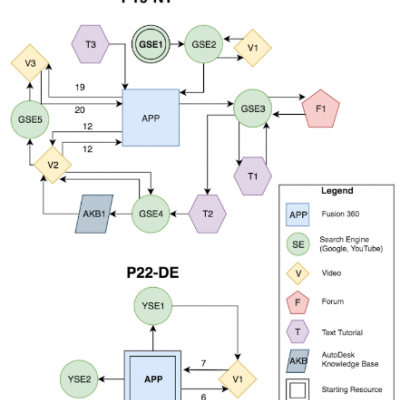Beyond "One-Size-Fits-All": Understanding the Diversity in How Software Newcomers Discover and Make Use of Help Resources
Authors
Kimia Kiani, George Cui, Andrea Bunt, Joanna L. McGrenere, Parmit K. Chilana
Research Lab
Parmit Chilana
Abstract
For most modern feature-rich software, considerable external help and learning resources are available on the web (e.g., documentation, tutorials, videos, Q&A forums). But, how do users new to an application discover and make use of such resources? We conducted in-lab and diary studies with 26 software newcomers from a variety of different backgrounds who were all using Fusion 360, a 3D modeling application, for the first time. Our results illustrate newcomers' diverse needs, perceptions, and help-seeking behaviors. We found a number of distinctions in how technical and non-technical users approached help-seeking, including: when and how they initiated the help-seeking process, their struggles in recognizing relevant help, the degree to which they made coordinated use of the application and different resources, and in how they perceived the utility of different help formats. We discuss implications for moving beyond "one-size-fits-all" help resources towards more structured, personalized, and curated help and learning materials.
Citation
Kiani, Kimia, George Cui, Andrea Bunt, Joanna McGrenere, and Parmit K. Chilana. "Beyond" One-Size-Fits-All" Understanding the Diversity in How Software Newcomers Discover and Make Use of Help Resources." In Proceedings of the 2019 CHI Conference on Human Factors in Computing Systems, pp. 1-14. 2019.
@inproceedings{kiani2019beyond,
title={Beyond" One-Size-Fits-All" Understanding the Diversity in How Software Newcomers Discover and Make Use of Help Resources},
author={Kiani, Kimia and Cui, George and Bunt, Andrea and McGrenere, Joanna and Chilana, Parmit K},
booktitle={Proceedings of the 2019 CHI Conference on Human Factors in Computing Systems},
pages={1--14},
year={2019}
}

